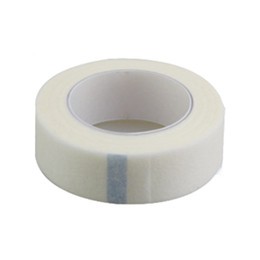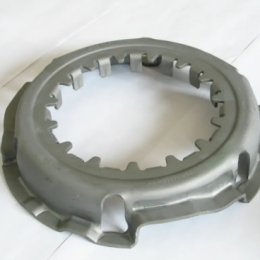Silicone PSA generally refers to the silicone polymer as the main body, cured as a permanent viscous anisotropic material, usually divided into oxide type and platinum plus molding two kinds, which are also silicone adhesives. Different silicone pressure sensitive adhesive has different heat resistance and good peel adhesion. In addition, there are many types of pressure-sensitive adhesive, of course, the model is also very much, applicable to a variety of adhesive tapes (such as protective films, and mica adhesive tapes). In the use of the production process, what are the precautions for silicone PSA when used?
Silicone PSA has good adhesion to general hard-to-stick materials with light pressure and good peel adhesion, ordinary silicone isolators can not be used on the back of many substrates or label isolation paper. As the temperature rises, some impurities and small molecules are first volatilized, and then some unstable groups and side chains break. When the temperature rises to a certain degree, the molecular chain begins to decompose, forming small chain segments. The higher the decomposition temperature of silicone pressure-sensitive adhesive, the better the high-temperature resistance.
In the production and use of silicone pressure-sensitive adhesive process, because of the lack of knowledge of silicone, there are many problems, and these problems can be solved. For example, the viscosity of the silicone pressure-sensitive adhesive is not good; the use of silicone pressure-sensitive adhesive environment requirements; and silicone pressure-sensitive adhesive in the moisture on the performance of the impact. According to the instructions, through the correct operation, in order to maximize the excellent performance of silicone pressure-sensitive adhesive.
Here’s some information about it:
- Why is the viscosity of silicone PSA bad?
- What are the conditions for using PSA?
- How to use silicone PSA?
- What are the effects of moisture content in Silicone PSA?
- How to solve the impact of moisture on the silicone PSA?
- How to choose silicone PSA?
- How to make silicone PSA?
1. Why is the viscosity of silicone PSA bad?
(1) If silicone PSA is not properly sealed after use, it will result in synthetic rubber solvent volatilization, viscosity thickening;
(2) If silicone pressure-sensitive adhesives in use have poor fluidity, surface drying time is too fast, generally because not at room temperature 25 ℃ environment sizing, it will result in small colloid activity, viscosity thickening;
(3) If the placement time is too long, silicone PSA bonding adhesive is made through emulsification, and is a relatively unstable liquid, the viscosity of the glue will grow with the placement time, the longer the placement, the thicker the viscosity;
(4 ) In the production process, the machine is up and down to stir the glue, due to gravity, the heavier macro molecules will sink, and the light will be on top, so absolute mixing is impossible, the normal is top of the glue will be a little thinner, the glue will be thicker below.
![]()
2. What are the conditions for using?
2.1 Safety
We must do a good job in the use of silicone pressure-sensitive adhesives safety protection, many products are heat-resistant, so the use of the temperature is also relatively high, and has its own bonding, we must pay attention to their own good protection to avoid unnecessary accidents.
Whether we are familiar with the product or not, we must do a good job of self-protection, it is very important for the user.
2.2 Quantity of use
Different fields in the use of silicone pressure-sensitive adhesive, their needs for the number of different, in accordance with the correct way to determine their needs.
The number we get must be accurate, in a little bit of time to start estimating, and eventually, a lot of quantities of time will be a lot of difference. This will have a great impact on all users, and it is crucial to determine the quantity in advance.
2.3 Adjust the proportion
Users should be based on the type of substrate, coating thickness climatic conditions (ambient temperature, humidity), and other silicone pressure-sensitive adhesive mixing ratios to make appropriate adjustments.
In high temperature and high humidity climate conditions, users should use silicone pressure-sensitive adhesive and curing agent ratio on the original basis to increase the use of about 5% to 10%.
2.4 Suitable for the environment
Silicone pressure-sensitive adhesives coating must maintain a good suitable environment, it is recommended that the operation of the workshop use dust-free processing, temperature control at 25 ~ 35 ℃, not suitable for low temperatures, and humidity control at 15 ~ 60%.
Too much dust will lead to an increase in the number of bad, the temperature is too low will lead to poor leveling, and adhesion decline, too much humidity will easily cause the film shrinkage, humidity is too low will easily cause static electricity safety hazards, surface whitening phenomenon.
![]()
3. How to use silicone PSA?
(1) To strictly deal with the surface of the adhesive
The reason is that the cleanliness of the surface of the adhesive is directly related to the adhesive effect of the pressure-sensitive adhesive. According to the PET / PI / non-woven surface materials, there are different choices of appropriate treatment.
(2) Pay attention to the exhaust
Bonding should be excluded from the adhesive layer of air on the contact surface, mixed with the static, defoaming.
(3) Precise application of glue, and silicone PSA bonding parts placed in the appropriate position.
This can improve the bonding effect to ensure that the annual joints of the glue will not flow out, to avoid causing the lack of adhesive piles of glue and other uneven bonding phenomena, you can choose the appropriate placement according to the characteristics of the bonding surface.
(4) Appropriate timing and amount of pressure.
Pressurization should not be too early to choose a gradual pressurization. Pressurization too early may lead to glue outflow and appropriate pressure can make the bonding effect better.
4. What are the effects of moisture content in Silicone PSA?
Moisture content affects the production and use of silicone pressure-sensitive adhesives in many ways. The level of moisture content has a significant negative impact on the curing process, the stability of the peel adhesion, and the appearance of the adhesive. Effective control of the moisture content is therefore an essential process element.
4.1 Curing process
First of all, the curing principle of additive silicone pressure sensitive is Si-H and vinyl in the platinum catalyst catalyzed by the addition reaction. The presence of moisture will react with Si-H to form hydrogen and Si-OH, losing the cross-linking point and leading to poor curing.
The macroscopic manifestation is the oiling of the film surface under the same curing conditions. Although the amount of Si-H is higher than that of vinyl in the formulation design, the curing is still irreversibly affected if the moisture content is high.
Even with the addition of excess crosslinker, product defects such as low peel strength can occur. At the same time, the higher specific heat of water requires more heat to be absorbed during volatilization. This leads to a lower temperature at the film surface, which ultimately leads to poor curing.
![]()
![]()
4.2 Appearance
Water evaporation is slow, and the glue through the drying channel is prone to not completely evaporating. After the cured glue lamination, moisture to the film surface migration, and aggregation, the macro-expression of the adhesive tape as a whole whitening transparency declines.
5. How to solve the impact of moisture on the silicone PSA?
5.1 Production process
In general, silicone pressure-sensitive adhesives solvents are used for toluene, the main raw material for silicone resin and raw rubber.
The three water-containing form is mainly wet storage of water, with moisture content stabilized at 0.1% or less, so in the production of silicone pressure-sensitive adhesives process using a specific structure of the reaction device, the use of toluene and water azeotropy, the water from the system to get rid of.
And strengthen the sealing of product packaging to ensure that no additional moisture enters the product during transportation and storage.
5.2 De-watering of the coating process
According to the requirements of the coating form, the a need to use solvents to dilute the silicone pressure-sensitive adhesives to the appropriate viscosity. The diluent used is mostly ethyl acetate, ethyl acetate has such advantages as low price, mild odor, and low toxicity, so it is widely used. However, due to its nature, ethyl acetate will absorb a lot of moisture in the air during storage, up to 10% of the volume fraction, which is the biggest obstacle to the coating process.
It has been verified that the use of bulk calcium chloride can effectively solve this problem. Firstly, the calcium chloride is baked in an oven at 180°C to remove the crystallized water. After cooling to room temperature, the dried calcium chloride is wrapped in an 800 mesh filter cloth. Quickly transfer to the solvent to be dried, slightly shaking so that the water is fully absorbed by the calcium chloride, static 1h can complete the drying process.
You can use an anhydrous copper sulfate color reaction to verify the drying effect. Better than ethyl acetate water absorption characteristics, it is recommended to complete the drying process 1h before use and use the same day.
The basic dosage is 5% of the total amount of ethyl acetate, adjust the dosage according to the actual situation. Calcium chloride can be reused, drying conditions for about 180 ℃ can, the time is determined according to the amount of calcium chloride drying, the process can be assisted by turning, to help the internal moisture quickly overflow.
Moisture content is always accompanied by silicone pressure-sensitive adhesives production and the use of the process, a convenient and effective way to ensure the smooth operation of the coating operation is always the focus of attention in related fields.
6. How to choose silicone PSA?
XJY-301 silicone pressure-sensitive adhesive is a specific structure of silicone resin and high molecular weight polydimethylsiloxane complex, are organic adhesives applied in specific scenario conditions, with high-temperature resistance, high stability, good electrical insulation, good transparency, high peel adhesion, and other characteristics, in the processing of industrial products, electronic processing, optical materials, medical care and other fields have a wide range of applications.
![]()
7. How to make silicone PSA?
With the application of new materials, silicone pressure-sensitive adhesive in many industries is welcomed, silicone pressure-sensitive adhesive has strong corrosion resistance, high-temperature resistance, is waterproof, environmentally friendly, high peel adhesion, and other functional advantages, so it is widely used in electronics industry and other fields. How do you make your products more competitive?
XJY Silicones is one of the leading silicone MQ resin and VMQ silicone manufacturers in China, with more than 30 years of R&D and manufacturing experience in the silicone industry and more than 15 related patents and technical support. Our silicone raw material products can meet the needs of silicone pressure-sensitive adhesives and support the provision of diversified customized solutions.



